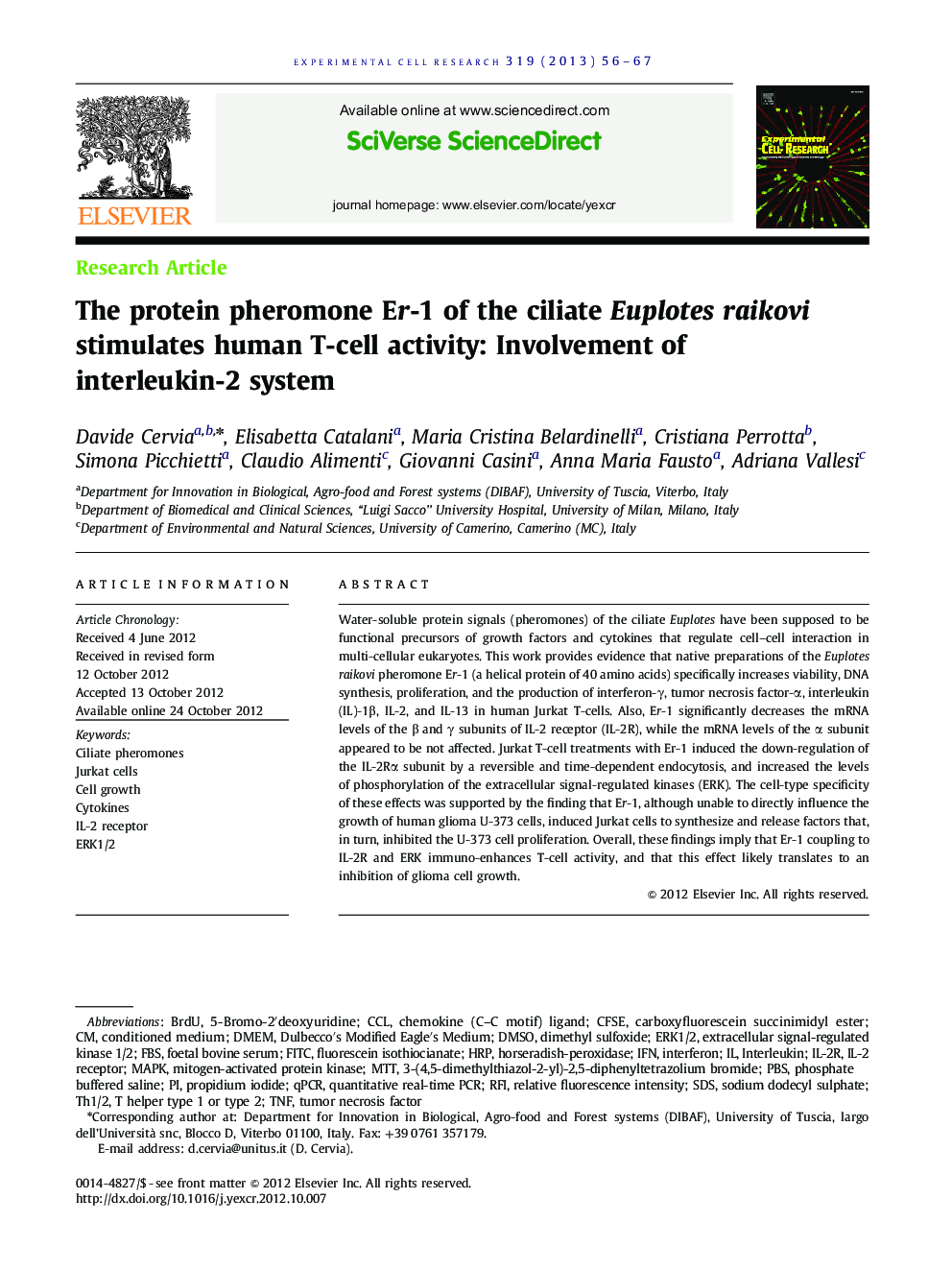| Article ID | Journal | Published Year | Pages | File Type |
|---|---|---|---|---|
| 2130566 | Experimental Cell Research | 2013 | 12 Pages |
Water-soluble protein signals (pheromones) of the ciliate Euplotes have been supposed to be functional precursors of growth factors and cytokines that regulate cell–cell interaction in multi-cellular eukaryotes. This work provides evidence that native preparations of the Euplotes raikovi pheromone Er-1 (a helical protein of 40 amino acids) specifically increases viability, DNA synthesis, proliferation, and the production of interferon-γ, tumor necrosis factor-α, interleukin (IL)-1β, IL-2, and IL-13 in human Jurkat T-cells. Also, Er-1 significantly decreases the mRNA levels of the β and γ subunits of IL-2 receptor (IL-2R), while the mRNA levels of the α subunit appeared to be not affected. Jurkat T-cell treatments with Er-1 induced the down-regulation of the IL-2Rα subunit by a reversible and time-dependent endocytosis, and increased the levels of phosphorylation of the extracellular signal-regulated kinases (ERK). The cell-type specificity of these effects was supported by the finding that Er-1, although unable to directly influence the growth of human glioma U-373 cells, induced Jurkat cells to synthesize and release factors that, in turn, inhibited the U-373 cell proliferation. Overall, these findings imply that Er-1 coupling to IL-2R and ERK immuno-enhances T-cell activity, and that this effect likely translates to an inhibition of glioma cell growth.
► Euplotes pheromone Er-1 increases the growth of human Jurkat T-cells. ► Er-1 increases the T-cell production of specific cytokines. ► Er-1 activates interleukin-2 receptor and extracellular signal-regulated kinases. ► The immuno-enhancing effect of Er-1 on Jurkat cells translates to an inhibition of human glioma cell growth.
